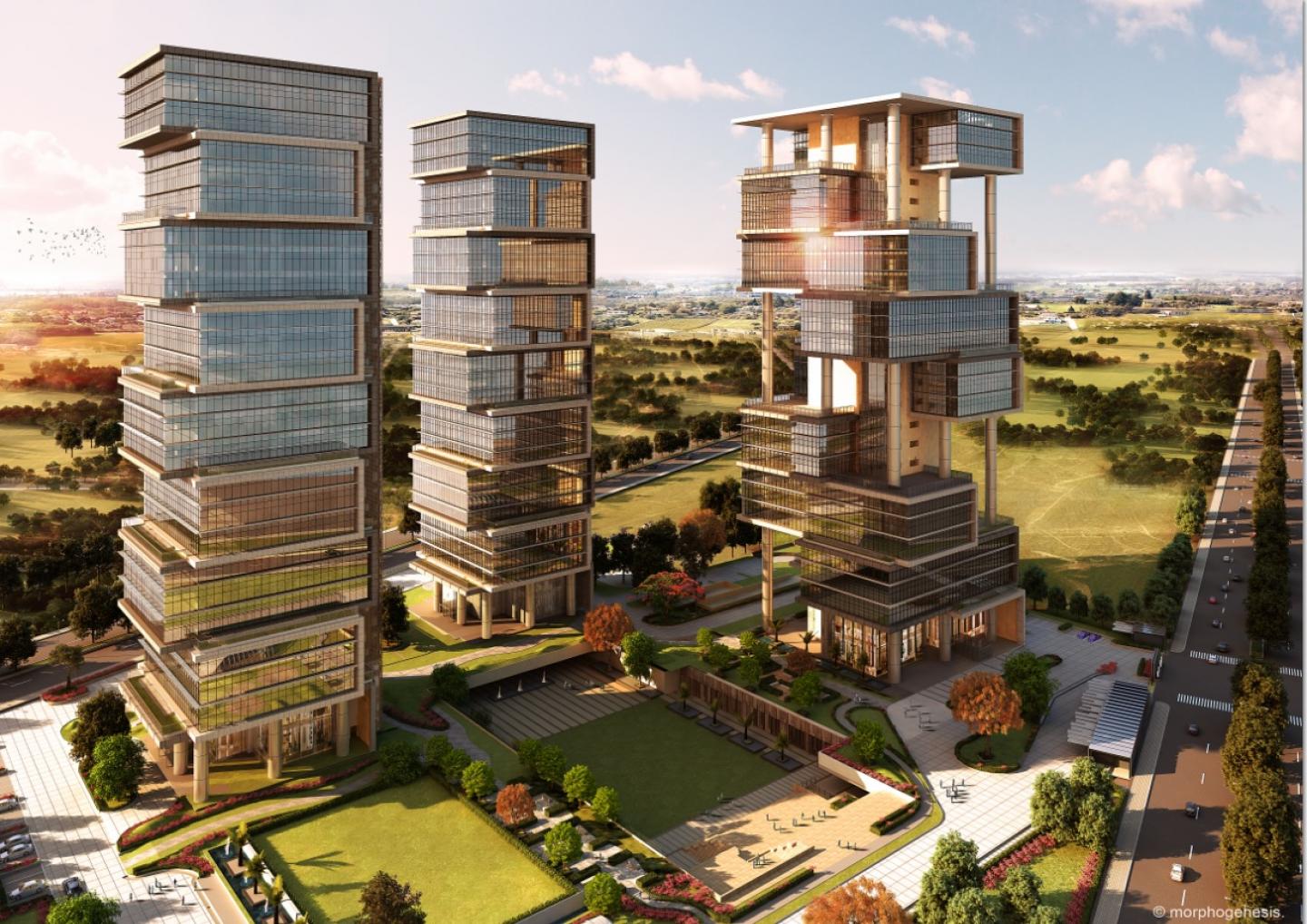This is an office complex comprising of three high-rise towers in Gurgaon- the millennium city, and a hub of emergent urbanism in the country. The project looks at redefining the high-rise typology in the North Indian context, which has traditionally been low-rise. The morphology is an outcome of a stack of cuboidal volumes and a series of attached open spaces, translated as a series of cascading voids- forming sky gardens. The project won the GRIHA Exemplary Practice Recognition, Passive architectural features India. GYS Vision focuses on creating a high rise morphology that addresses the socio-cultural need for proximity to open spaces, and perhaps still retaining a ‘soul space’ approach to this typology.
The two key components of the design brief are the office towers and an expansive landscape zone that doubles up as a public space for the users. The scheme was developed as a response to reinterpret the typical Indian office typology as spaces being laid out horizontally on the ground. This was achieved by stacking the office module vertically, in order to free up the ground to help the user engage with the environment. Although the Initial client brief demanded 3 office towers, which were to be duplicated over the site to create an iconic image, while the design was developed, it was decided to have one Iconic Tower and 2 identical ones in order to endow the scheme with an identity. The high-rise corporate office towers form the primary focus of this scheme, along with an emphasis on the creation of a variety of experiential spaces within a landscaped public realm.
The Site has been organized in a manner, in which the placement of the three towers clears up the ground for a large landscaped zone that extends into the lower ground floor level, creating both formal and informal spaces at a public level. The lower ground floor acts as a hub that activates the landscape area with food courts and convention center. The two Identical Towers are placed on a pure orientation with the core facing the harsh sun of the south-west, where as the iconic tower is placed in a manner that it is relatively shaded by the tower to its south.
The design intent focuses on seamless integration of the towers with the landscape/ activity below. A lot of the landscape design focuses on gathering the pedestrian movement from across the site and directing them to the central open space. The location of the landscaped zone has been done in accordance with shading patterns that ensure shading for most part of the year, making it a favorable space in the harsh weather conditions.
The form of the sky scraper was generated from a computer optimization program, where the primary design inputs/generators were an optimal floor plate size that is suitable for office usage, an appropriate ratio/ proportion between the dimensions of the floor plan and the total height of the building and most importantly, the need for break-out spaces/terraces at each floor. What makes the design of this high office tower unique is the fact that each office floor plate, approximately 1200 sq m in area, has a dedicated double-height terrace measuring approximately 100 sq m. The position of these terraces spirals through the tower, creating visual dynamics in the built volume. The towers work on a three-floor low rise office typology that is stacked vertically to achieve first, a highly sculptural form and second, a variety of spaces in the form of terraces. The form of the Iconic tower, which has a high degree of terracing, resulted from a series of permutations and combinations that culminated in a form derived from a simple rotation that helps to reiterate its role as a visual icon for the city, with the 2 identical towers as a backdrop.
To address the environmental issues that concern the contemporary office, orientation is optimized in the creation of built volumes. The façade strategy for both the identical towers focuses on reducing the solar gain while providing maximum views from the office floors. The system developed is orientation sensitive i.e. the west façade is designed to have a punched wall that blocks out the harsh sun. The South façade is shaded by means of horizontal louvers that are continued onto the east. The north façade uses the louvers as an elevational element only. The core is wrapped with a mesh that allows for the provision of multiple openings in the services area maximizing the daylight to achieve maximum daylight “ingress” in these areas.
The amalgamation of design principles and environmental imperatives helps to envisage a scheme, which responds to its urban setting and complex program in a visually aesthetic manner within the contemporary Indian work culture paradigm. Articulation of volumes and spaces generates a design that is a radical departure from the structured differentiated spaces of the traditional office and the monotony of the open plan halls that have dominated traditional Indian office planning.
2008





